|
The Raven Totem painting has been completed. I just need to varnish it once it has set for a day. It is 24"x36" on exhibition canvas.
Background info on this Totem: This totem was carved for the Museum of Anthropology at the University of British Columbia by Mungo Martin in 1951. It is a family pole in the Kwakiutl style. 'The crest figures on this pole show Thunderbird at the top. Next is the Ancestral Chief, followed by the Raven perched over the whale. At the base stands another chief, possibly Chief Kalilix himself'. (Looking at Totem Poles' by Hilary Stewart This painting will be included in the upcoming Exhibition which opens February 16th in Mission BC.
0 Comments
Even though I only had 5 hours sleep, and dragging a bit, I did have a good day in the studio. The progress may or may not be so apparent but it is coming along. My process takes time to develop the successive thin layers and I'm now in the stage of also working in the details such as the cracks, etc. By the time it is done, the hours will total to the equivalent of two and a half weeks. I need to have this Raven painting completed before this weekend so that I can start on the completion of the other painting next week. I have another Open House for the condo this Sunday.
All available paintings have to be delivered to Mission BC on Feb. 13th. Unfortunately, with putting so much into storage for the sale of the condo, I also packed my Golden Varnish which I will need for these 2 paintings... My anticipation of having 3 uninterrupted days of painting before the Open House was dashed when a viewing was scheduled yesterday.
So I got a day in the studio on Thursday, packed everything the next morning, reset last night, and had a good day in the studio today (and having to pack up once again tonight). The gaps between painting sessions are annoying and make it hard to maintain focus and momentum. Frankly, I would prefer to paint tomorrow rather then packing out and sitting in a car for 3 hours or so. But the need to get the condo sold remains the priority, so that my son and I (and wee cat) can finally begin our new lives on Vancouver Island, and into an expanded studio space. So, I'll be back in my studio on Monday to continue on the Raven painting. Fingers crossed. North Wolf Totem, 2015 12” x 36” x 1.5” ‘Wolf Totem Pole: Everyone’s Grandfather’ was raised at the Fairbanks University of Alaska Museum in 1988. The pole honors the wolf clan and was named by George Dalton, Elder of the Kaag Waan Taan (Wolf) Clan. The 20-foot pole is made of western red cedar from Ketchikan and features the three figures of eagle, wolf, and bear. This particular totem pole honors the traditional teaching method of a master artist working alongside his apprentices. * The name of the carver(s) unknown. ~ ~ ~ ~ ~ ~ During my first exhibition of the Journeying With The Totems series in January-February of 2015, I was able to be onsite on a somewhat regular basis, to meet with viewers, answer their questions, and talk about the series. I set up a small easel in one corner so that I could paint during the quiet times, especially in the heavier rains of the season. It allowed me to be in the space without encroaching on the viewer(s) space while looking at the paintings. They could come and see what I was doing without feeling like I was like a 'saleman' in a store. It was a wonderful time as; here I was in the Silk Purse Gallery, with its wonderful view of English Bay, and with Eagles in the nearby tall cedars. I made a point of savoring every moment, imagining what it would be like to have a studio like this all the time. But it is only a temporary dream after all. One cherished memory was the day of setting up the show. It was pouring rain. As I waited for the staff to arrive to open the gallery, I was feeling a bit glum standing in the rain, when I started to hear an eagle loudly vocalizing from the top the tree next to the gallery. It lifted my spirits and I understood this moment as a good omen. I had chosen to work on a smaller canvas this time, as I wasn’t sure how much time I would have, and I needed an image that could accommodate a lot of interruptions. The larger images become almost impossible to do when my time is disjointed. For those, I need focused time in order to make progress. You just can’t jump in and start painting. Not with the realistic totems anyway. Having completed the Eagle-Raven Shield painting, I was interested in a wolf totem that I had seen on the Fairbanks University website. I hadn’t worked on a wolf before and I loved the composition of this particular totem. It did pose a new challenge though. The wolf totem itself had been given a black stain and so I had to factor that and how it played with the wood underneath. Because of the narrow size of the canvas, I chose a cropping of the face which reminded me of a Bateman painting a number of years ago, where he depicted a black wolf peering from behind a tree in a winter setting. I liked the strength of the one eye looking at you, the beauty of the upper composition and the menacing of the mouth. I did manage to complete this painting during the four weeks I was in the Silk Purse Gallery. Four weeks before the paintings of the Journeying With The Totems series get delivered on February 13th, to the Mission Arts Centre. Heading into a complex month with trying to get 2 paintings completed in time, start on a new icon commission (maybe 2) and sell my condo and hopefully begin arrangements for the big move to the Island. Can never be simple.
The exhibition opens on February 16th and runs until March 5th. http://www.andreprevost.com/exhibitions.html Raven & Eagle Shield, 2015 24” x 48” x 1.5” Detail from the Bicentennial Totem Pole in Sitka National Historical Park, Alaska, ‘depicting the last 200 years of Pacific Northwest Coast Indian cultural history’. Carved by Duane Pasco in 1976. This park is in honor of the Battle of Sitka, the site of the battle between the Tlingit, Aleut/Koniag and the Russians in 1804. This battle marked the beginning of the Russian ruling Sitka for many years. This section presents the Tlingit, Aleut/Koniag before the white man’s arrival (you can see the shoes of the white man depicted over the heads of the Raven and Eagle. There is such a striking sense of balance in this section. Also included is a ‘Copper’. “Coppers are an essential part of the potlatch economy of the Northwest Coast, particularly among the Kwakwaka'wakw. These beaten and decorated sheets of copper are important symbols of wealth, which in turn reflects relative degrees of status and power. Each copper was individually named.”(Codere). The salmon symbolize abundant food sources. ______________________________ When I came across the images of this Alaskan totem online, I was struck by its story and especially by the second section from the bottom, in its powerful balance. At first, I had only seen this one section and was unsure what I was seeing on the tops of the Eagle and Raven’s heads. When I found the full totem, the significance of what those were made the pre-white man section even more powerful. I loved how this one cropped image, even though orderly and symmetrical, was under the weight of the impending changes and disorder to come. I decided to use a 24”x 48” canvas and cropped the image to capture the essence of this totem section, and again, to leave out the surrounding detracting landscape. This meant that I had to crop the beaks of the Raven and Eagle, while still maintaining the strength of each face. The first challenge in preparing this design was the key stoning of the photograph. Because the composition of the totem was so symmetrical, I used a forced grid pattern to correct the key stoning at the top. This meant that the details at the top of the canvas would require some adjusting to compensate for the stretching. Forced grid pattern? I hadn’t tried this before. I prepared the usual grid pattern on the photograph, but instead of following the rectangle of the photograph, I followed the side edges of the totem itself. On the canvas, I drew the regular grid pattern on the canvas. Then I transferred the image grid design onto the canvas grid, which automatically opened up the upper section. With some adjustments to shapes of the head and eyes, it had achieved a focal point on the totem as though you were standing at its level, and everything was perfectly in balance. A caution is that this forced grid will only work on some compositions, not all. As I began to develop this painting, the other choice that I made was to adjust the wing and cheek on the right hand side. On the actual totem, the level of deterioration and patina on the south side was more pronounced. But in order to maintain that balance and order, I toned down the amount of graying and loss of paint on the southern wing and southern cheek of the Eagle’s face. This way, the viewer’s eye remains in the central composition and not pulled the right of the canvas and working against that calmness and balance. There are so many incredibly beautiful details in Duane Pasco’s design and carving. I am always struck by elements common in the works from other areas around the world. In this totem, the hands holding the copper have similarities to the ancient carvings from Central America for example. What also tweaks my curiosity is how, somewhere at the core of all humans, there are those similarities within ancient traditions, such as the shape of the eye, etc. I had decided to do this painting late in 2014, knowing that I had my first exhibition in late January. I wasn’t sure whether I would be able to complete it in time. I managed to put in long hours, and very long days in the end, in order to complete it in time. It turned out to be much more labour intensive then I had expected at the start. It was crucial that I capture the truth of the totem. So many layers, so many glazes. So many wood grains, wood textures, and carved surfaces responding to aging in their own way, and to the light and shadows. Not having a proper wall easel, which can be adjusted to paint the bottom sections, I had to improve in order to lift the canvas to save my lower back. There was as much detail at the bottom. (This is part of my goal of finally getting into a house on the Island where I can have the room to set up my studio space, as I need.) I know I could have gone on and on in the minutia of the details, but like the other paintings, there is that point when your instincts tell you that it is time to set the brush down. Has been purchased as part of a private collection in West Vancouver, BC
Beaver Totem With Moss, 2014 18” x 48” x 1.5” The reference image identified this pole as being at the UBC Museum of Anthropology but the one currently standing in the outdoor exhibit is a newer one. Unsure as to where this older totem has been moved to. This is a subject that has been on my mind since the beginning, even before the series. The First Nations tradition for the totems is that, they too follow their natural life cycle, which includes the last years of decay and returning to the earth. Museums have posed a white man’s notion of preservation with the totems and carvings, which were acquired through time, much taken from First Nations around the world, without any permission. There have been great efforts in recent years to try and repatriate these cultural artifacts and family treasures. I suppose that with my interest in how the wood and carving ages through time, I am naturally drawn to a totem entering it final stages. I’ve seen photos of totems already fallen and being reclaimed by nature, and I also know how First Nations communities prefer keeping their final resting places private so that they can remain undisturbed. So, at this time, I don’t feel comfortable in trying a painting of this phase where the totem reaches its end and its life is absorbed by nature again, and the cycle continues. But I came across an older picture of the Beaver Totem (Memorial Pole) that use to be at UBC MOA, before it was finally repatriated to an undisclosed area, and a copy was carved to take its place. I was deeply moved in seeing this image of the totem where the wood is gradually being overtaken by mosses and dry rot. And yet, there is still such nobility to this totem. I came back to this picture every time that was I was looking for the next subject for a painting, but I didn’t feel I was ready or that it was the right time. But this time around, having completed the Child/Cub With Human Mother painting, the Beaver Totem was not to be left on hold any longer. I tried seeing if I could crop the image to fit the standard canvas sizes, but that would have required cutting off a section (top or bottom) that was pivotal to the whole. I needed to maintain as much of the image of the Beaver Totem as it held different stages of decay, different layers of mosses gradually growing over the carved image. So that left me with the expense of having a special 18” x 48” canvas prepared for me. It was the first size that allowed me to present a totem in its natural taller silhouette. Once base coated and drafted onto the canvas, I gradually built up some of the main colours within each section:
Many hours and days went by. But as with the other paintings and my work in iconography, I’ve learned to listen to the that small voice when it starts saying that the time is coming to set the brush down. Otherwise, I could continue on and on and risk overworking a painting. I guess it is especially problematic when you are doing a more realistic style. The quest for the details can take over. But this isn’t meant to be a photograph. An important lessen learned and to be understood from the ancient traditions in iconography is that perfection hasn’t been reached, and realistically, is not attainable, but that your past works, the current work in progress, and future works, are all part of that journey. The same applies in the iconographic nature of my totem studies. I trust each totem to inform me whether its essence has been captured for viewers to see and experience. This totem in particular, no longer being within public view, is completing (or has completed) its journey back to the earth. I felt the urgency of recording this special image, as there were no others of this wonderful totem in its elder years. The paintings of this series are time capsules. The totems keep moving along on their journeys and never look like this again. This awe inspiring Beaver Totem has completed its course and I hope that this painting will be added as an ongoing memory of it. ‘Beaver Totem With Moss’ is owned by John Stefaniuk, partner with the firm Thompson Dorfman Sweatman LLP, Winnipeg Manitoba |
Archives
November 2020
|
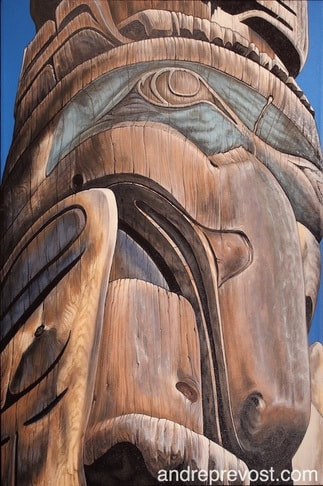
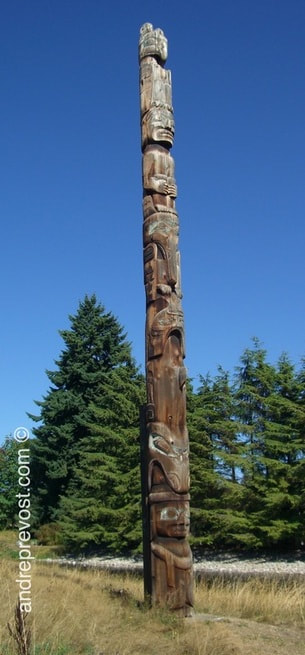
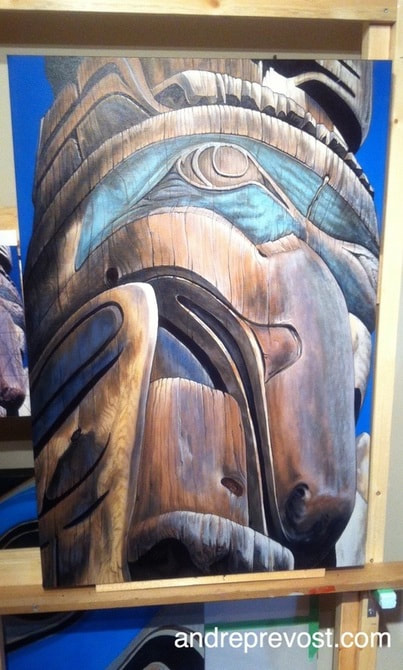
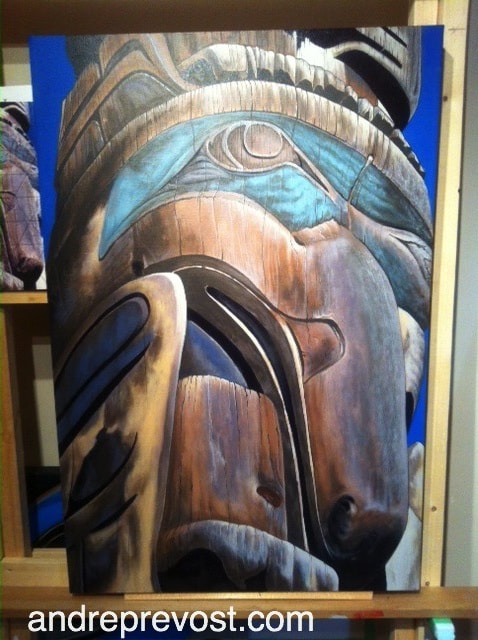

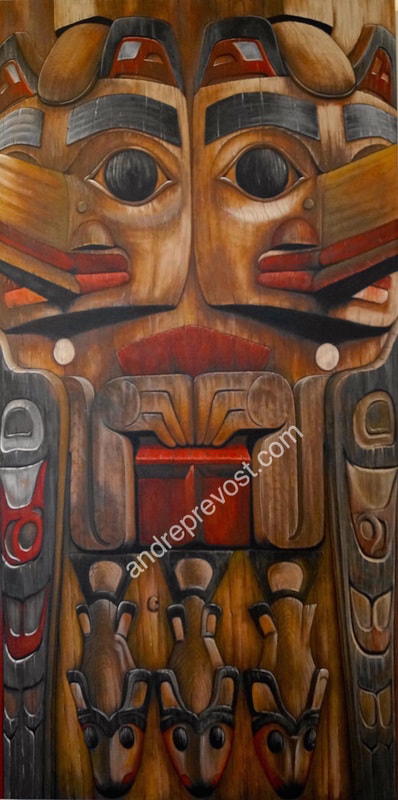
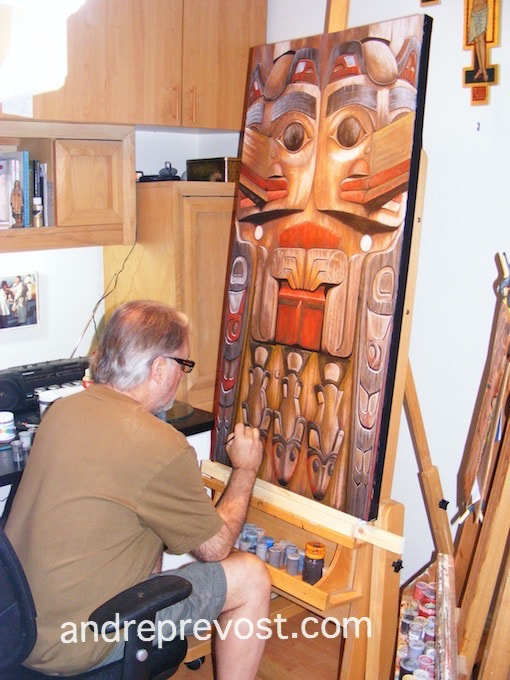
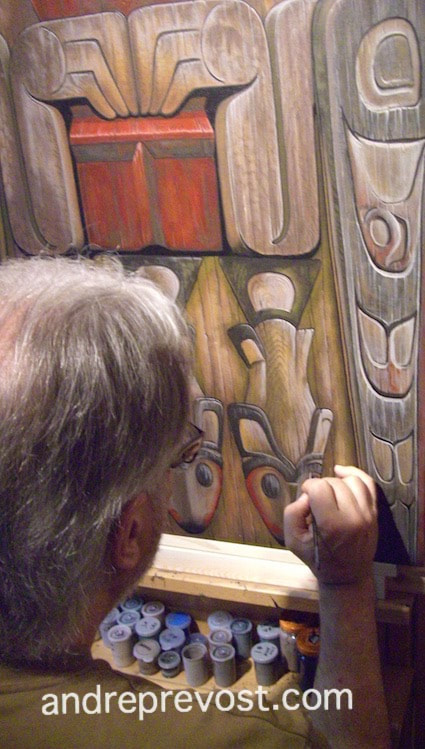
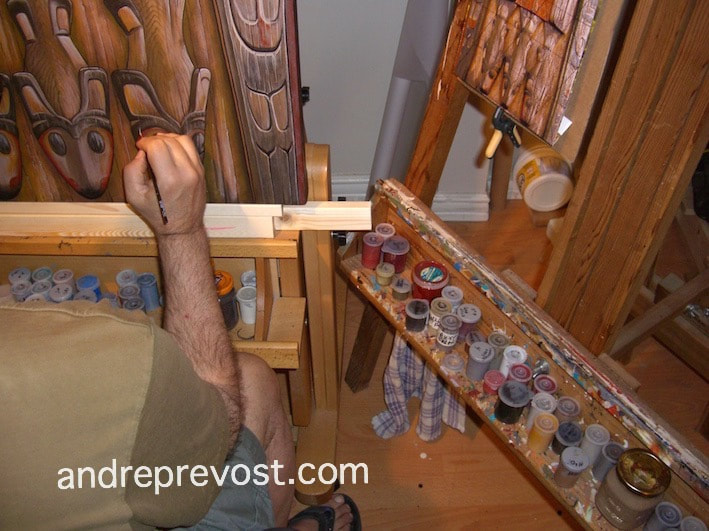

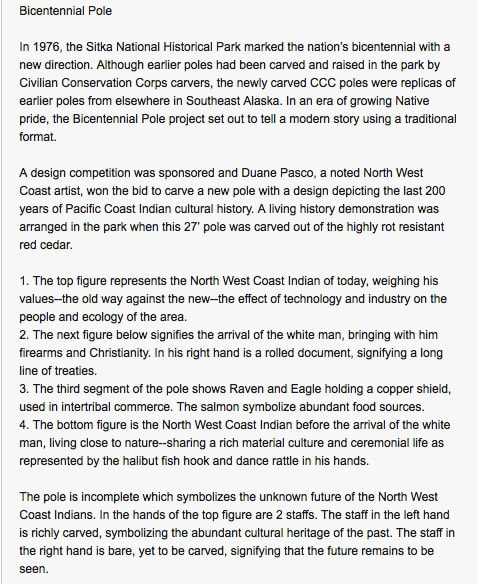

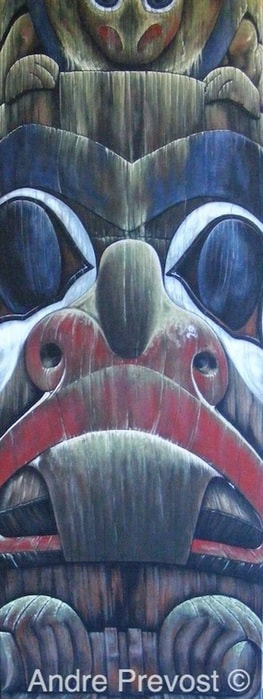
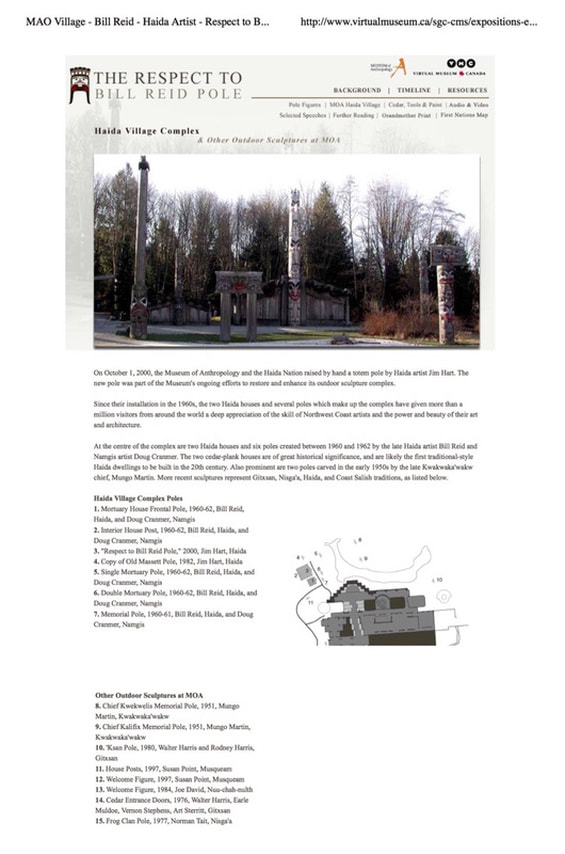
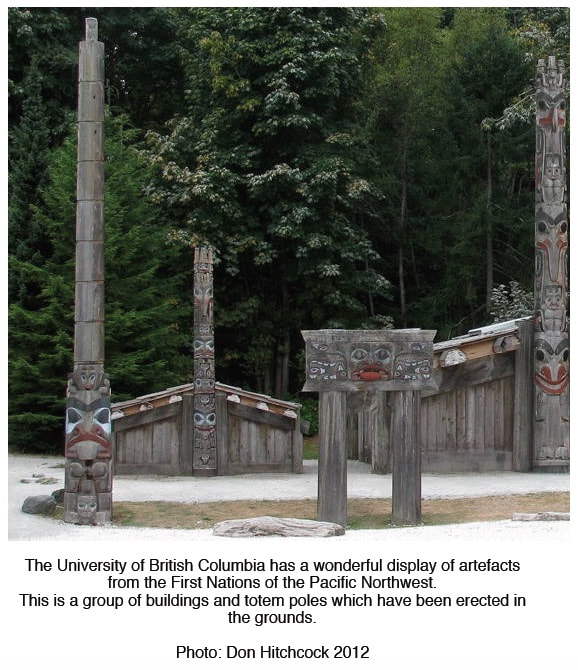
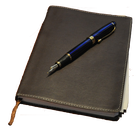
 RSS Feed
RSS Feed